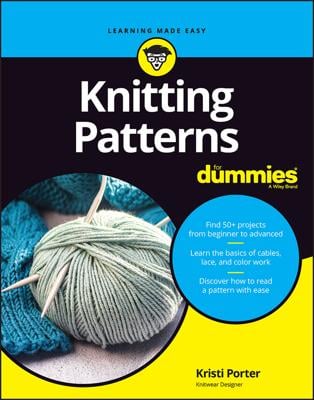For something that doesn't need to fit exactly, like a scarf or a wrap, you don't need to be nearly as fastidious. If it looks good to you, you don't need to fret about the numbers.
When to check your gauge
After you've cast on and knit a couple of inches of your project, measure your gauge again to see how it's going. If you made and measured your swatch a month ago or even a week ago, things may have changed. Your mood, level of alertness, or the fact that you've been knitting more or less often can all affect your knitting tension. Or maybe you swatched on straight wooden needles and now you're knitting with metal circular needles. The material a needle is made of can make a big difference to your gauge.Check your gauge from time to time as you work on your project, particularly if you have put it aside for a while and have just recently come back to it. If you get in the habit of checking your gauge when you have a tape measure out to determine the length of your knitting, it won't seem like any extra work.
After you verify that you're on the right track with your gauge, you can continue knitting with confidence. It's much easier to rip out a few inches than it is to rip out the whole back when you discover that your gauge is off. And knitters, like everyone else, are often loath to admit their mistakes. If you have a gnawing sense that something isn't quite right, force yourself to do the necessary reality check and measure things. The sooner you correct an error, the better.
How to check your gauge
To check gauge during a project, many knitters like to use a gauge measurement tool. This tool has holes to size up needles and a small window that's 2 inches wide and 2 inches tall. To use the gauge measurement tool, lay your knitting flat and, without pressing it down so vigorously that you distort the stitches, lay your gauge meter on top and count how many stitches there are across the window. Don't forget that you have to double the number of stitches to determine the number of stitches per 4 inches.You can also use a tape measure or ruler to help you count the number of stitches per 4 inches. A lightweight clear plastic ruler works nicely.
Whatever tool you use, be sure that your knitting is flat on a table and that your measuring device is lying parallel to your rows of stitches.
